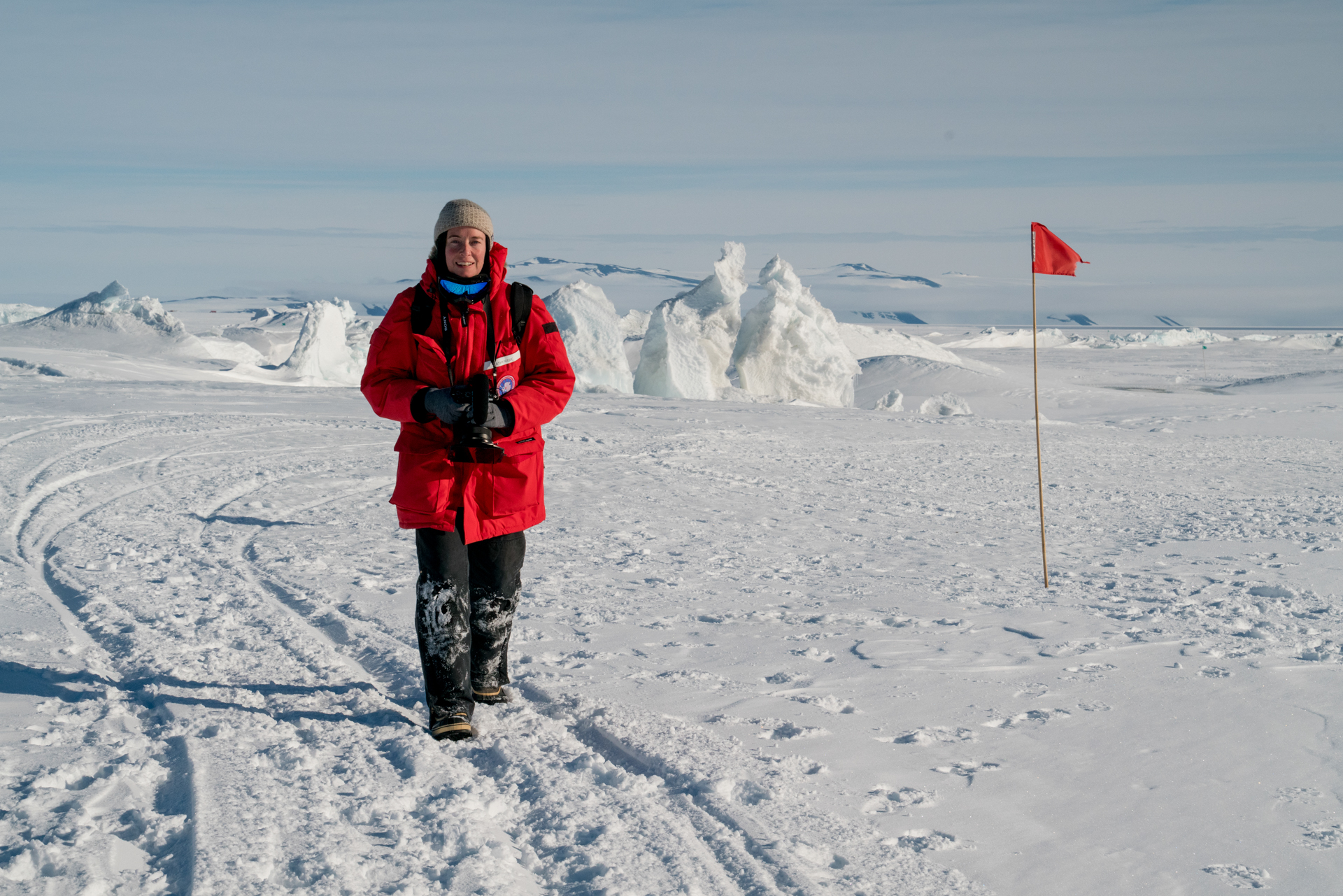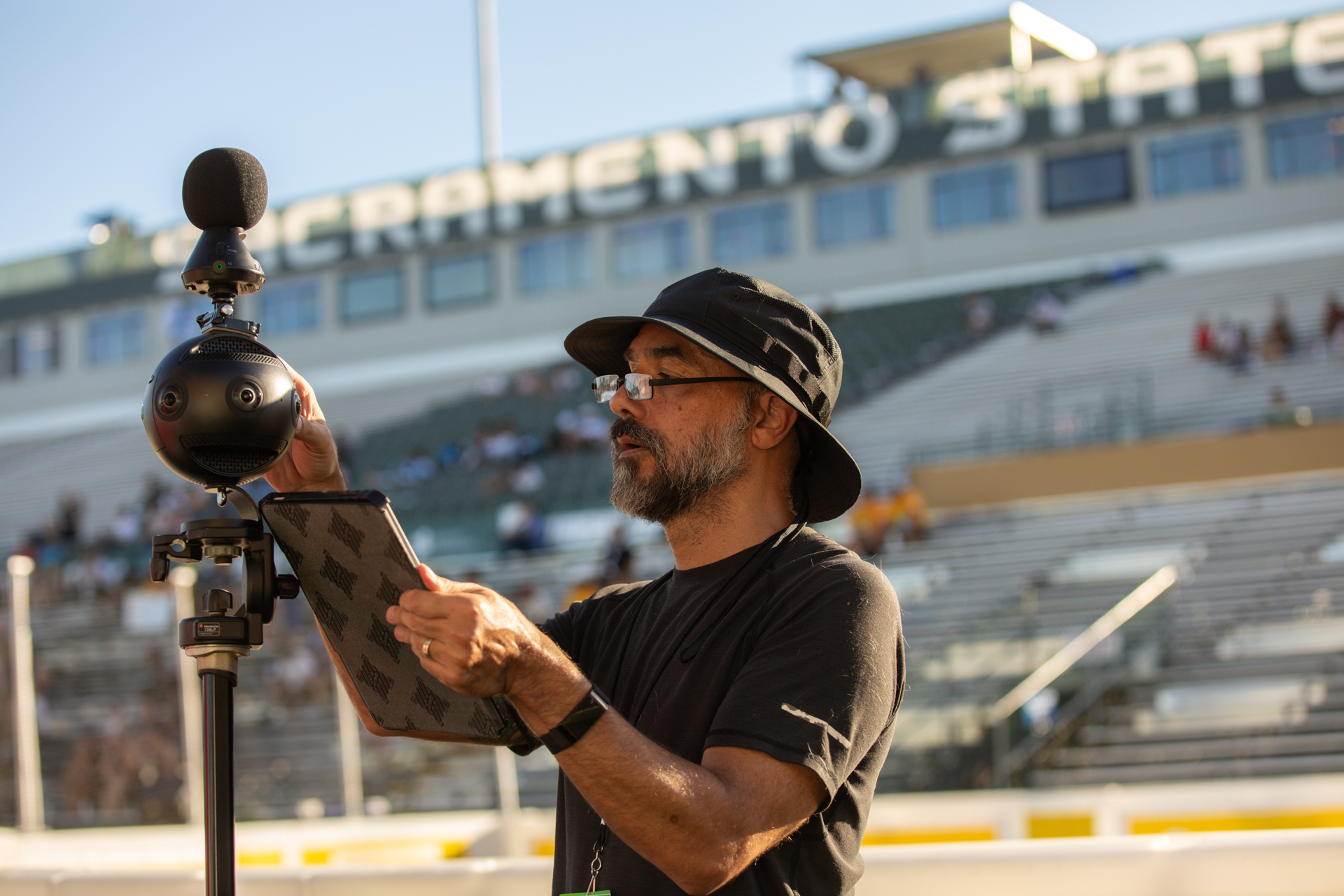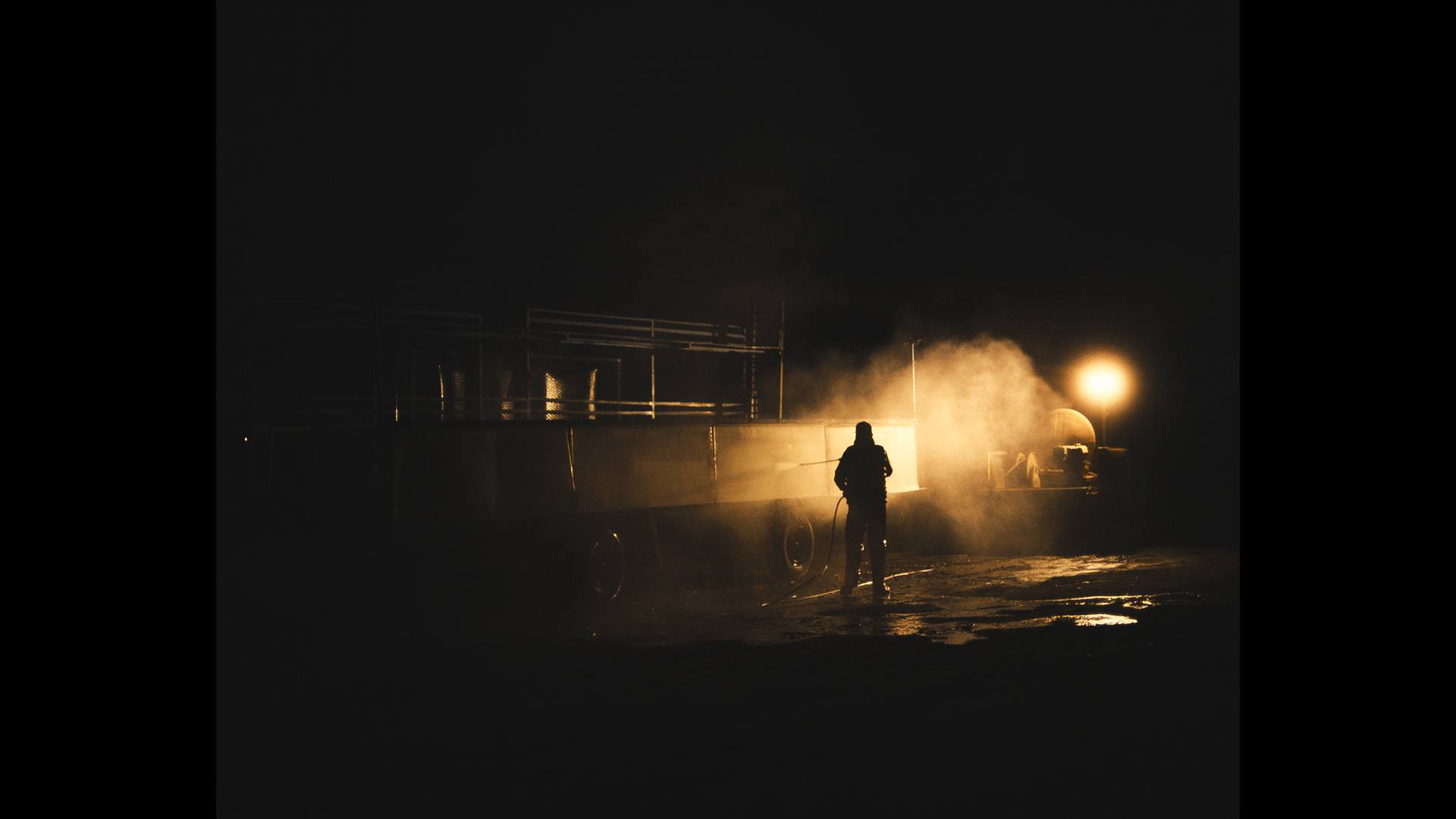Story Content
Sac State filmmaker’s award-winning climate documentary reveals hidden history beneath Greenland’s ice
June 05, 2025
Sacramento State professor and award-winning filmmaker Kathy Kasic isn’t shy about getting her climate change documentaries in front of audiences.
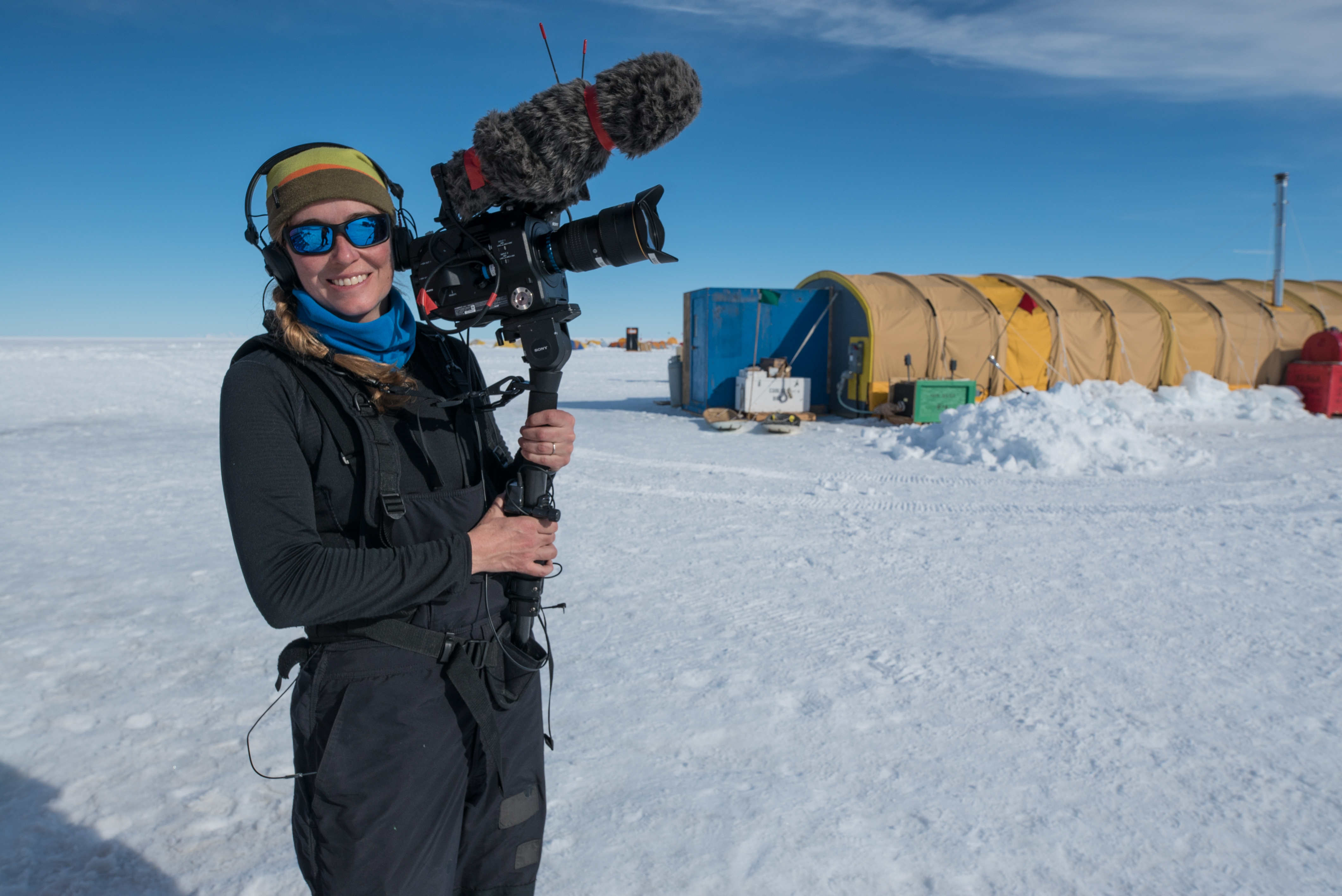
From festivals and screenings across the country – including at a briefing for Congresswoman Doris Matsui – to a Zoom Q&A with a university in Chile, Kasic has been busy promoting her latest film, “The Memory of Darkness, Light, and Ice.”
But the former biologist isn’t chasing accolades or fame.
Instead, Kasic has an urgent message about the disappearing Greenland Ice Sheet and its impact on our economic and environmental future.
“I’ve gotten past the point of just making films and having them sit on some obscure website,” Kasic said. “For me, the act of having people watch a film and sharing its content is just as important as making a film.”
“The Memory of Darkness, Light, and Ice,” funded by the National Science Foundation and European Research Council, traces a group of scientists studying ice cores pulled from beneath the Greenland Ice Sheet during the Cold War and their inadvertent discovery that the sheet had melted before.
The film highlights how, by looking 416,000 years into the past, scientists can predict what will happen in the future.
“If we don’t take action to mitigate the effects of global warming and climate change, then we’ll see a very different world for our children and our grandchildren,” Kasic said. “As a human being on this planet, I’ve always believed we should pass the planet on to future generations in at least a better way than when we received it.”
During the 1960s, the U.S. military built a camp 40 to 50 feet below the Greenland Ice Sheet to hide missiles from enemy view. The clandestine project included collecting ice cores by drilling nearly a mile through the entire thickness of the ice and as deep as 12 feet into the sediment underneath.
“If you take the amount of ice that has melted in Greenland and laid it on top of Texas, you’d get ice 31 feet thick. It’s a call to say, we can’t ignore this anymore. Our current administration would really like us to just bury our heads in the sand, but if we do that, then our heads are going to get really wet.” -- Kathy Kasic
When the ice walls began to collapse, Camp Century and the hundred or so men stationed there had to evacuate. The cores of ice and frozen sediment were stored away, forgotten for decades.
Until recently.
“They didn’t really know how to date it, so they put it in a freezer and it got moved around to different freezers as people retired and changed positions in life, and it ended up in Copenhagen,” Kasic said.
“These scientists that I was working with started looking for the sediment because now we have methods for understanding how old the sediment could be, or when it last saw sunlight, or what the climate conditions were.”
Scientists analyzing the sediment found plants and bugs, clear evidence the ice sheet had melted.
“You’re not going to find plant life and bug remains under an ice sheet, so it meant the ice was gone,” Kasic said.
They developed models to figure out when the ice had melted and discovered that the most recent time the area had been exposed to sunlight was 416,000 years ago, when carbon dioxide in the atmosphere was half what it is today.
“It means we are facing massive consequences by doubling our CO2, because we know that carbon dioxide in the atmosphere warms up the planet,” Kasic said.
And melts ice, contributing to rising sea levels.
“If you take the amount of ice that has melted in Greenland and laid it on top of Texas, you’d get ice 31 feet thick,” she said. “It’s a call to say, we can’t ignore this anymore.
“Our current administration would really like us to just bury our heads in the sand, but if we do that, then our heads are going to get really wet.”
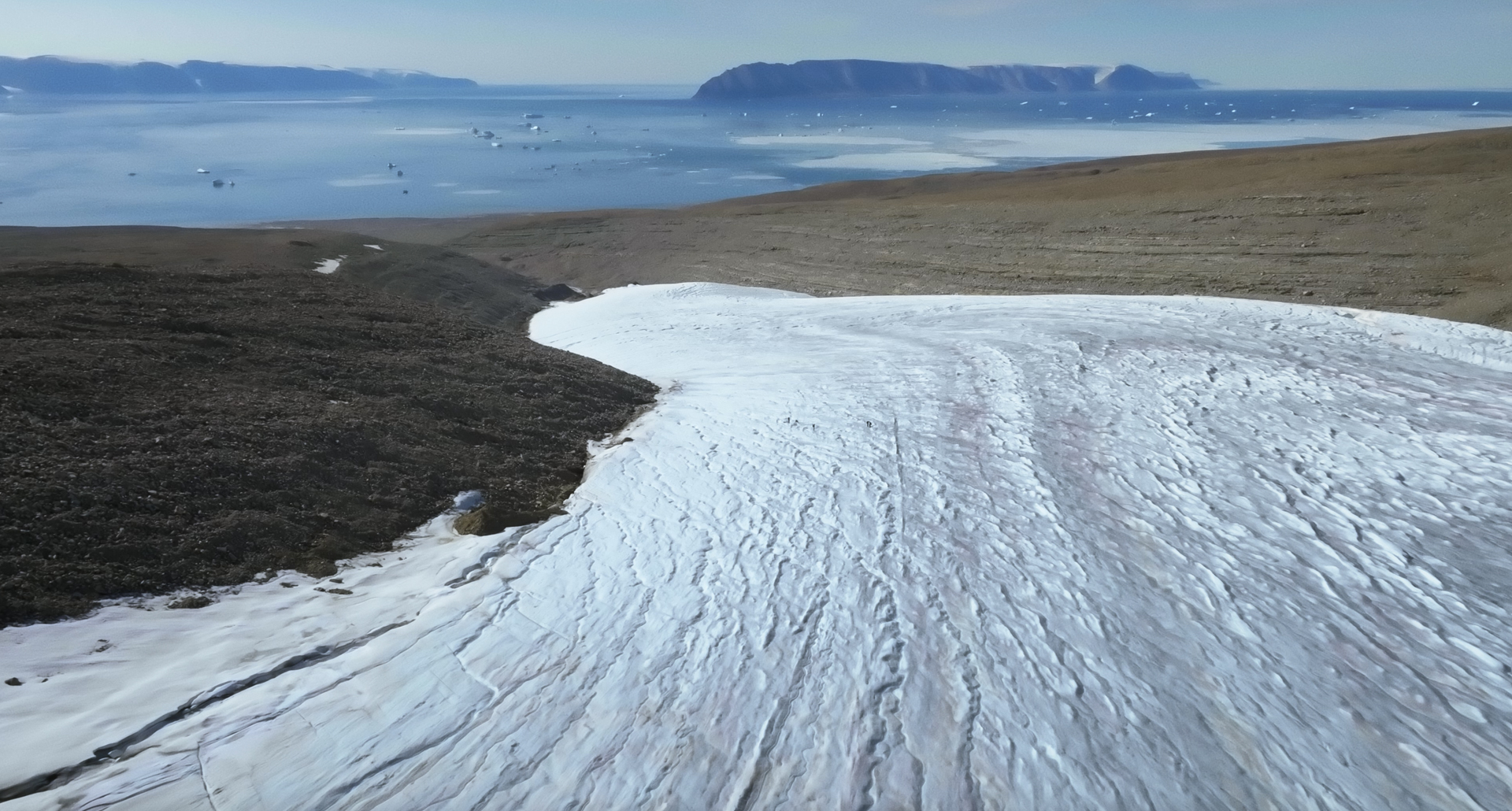
Kasic’s film tells the story of scientists working on their individual research and pieces it together, explaining what their findings mean for our world.
“We’re already being affected by climate change today,” she said. “Insurance companies are using climate models currently to predict whether or not they’ll drop customers.”
Kasic blends poetic cinematography with climate science in a style she calls “sensory vérité,” to get people to feel the imagery.
“I like trying to make people feel the environment, especially in this case of Greenland, or the lab they’re in,” Kasic said. “I'm also bringing in the process of science so that you're not just hearing the information, but you're watching how people are going about it, so they're taking you along on their journey.
“It’s important that people understand how the research is being done and how the conclusions are being drawn, so they’re sharing the process. If you also share a sort of poetic feel to the imagery and sound, instead of just reaching the mind, you reach their hearts, too.”
“The Memory of Darkness, Light, and Ice” won this year’s Environmental Filmmaking award at the Wild and Scenic Film Festival and the 2024 Best Feature Documentary at the Raw Science Film Festival. It was also screened at a Sustainability Task Force Briefing for Matsui at the U.S. Capitol.
Kasic worked on the film for three years, traveling through Greenland during the summer and often camping on the ice sheet in near freezing conditions with wind and rain.
“With the wind coming across the ice sheet and the freezing rain, you know you never really get dry,” she said. “Everything gets wet, even the camera. I had to cover it fully with a plastic sheet, and there were some days the conditions were absolutely horrendous.
“But it also makes more interesting filmmaking when you go where no one else wants to.”
The reward for Kasic is experiencing a part of the world few people get to see.
“Greenland is one of the most beautiful places in the world,” she said. “But it’s not for the faint of heart.”
Kasic, a film professor in the Communication Studies department at Sac State, juggled her teaching duties with editing and promoting her film, which involved a dozen screenings all over the U.S. She makes a point of teaching her students about the business side of making art.
“When you’re a student, it takes so much effort to make a film. It’s so hard. There’s so much that goes into it, and you want to do it right. I think sometimes, that’s all you can think about,” she said.
“It’s important to always teach students that it’s not just about the act of making a film, but it’s also about where it goes in the end and who watches it.”
Recent Sac State graduate Trinity Kummer met Kasic when she reached out about participating in the J Street Film Festival, a senior capstone event for film students held at the Crest Theatre each semester. Kummer had just completed her senior project, a mixed-media animated film, and wanted a place to showcase it. Kasic showed the film and later hired her as the illustrator on “The Memory of Darkness, Light, and Ice.”
“It’s been such a powerful journey learning about all these issues and being able to participate in the movement to fix them,” Kummer said. “My favorite part was working with Kathy (Kasic) and the scientists. I don’t know much about science, but I learned so much.
“It was super enlightening. Since working on her film, I’ve been gearing towards social justice and doing any work that helps to improve the world.”
Kasic is currently finishing another feature length documentary called “The Living Ice of Greenland,” and is starting one closer to home – “The Story of the American River.”
“The Memory of Darkness, Light, and Ice” will stream on Amazon Prime and Arte starting in November 2025.
More Stories Showcasing Faculty Documentaries
Media Resources
Faculty/Staff Resources
Looking for a Faculty Expert?
Contact University Communications
(916) 217-8366
communications@csus.edu
